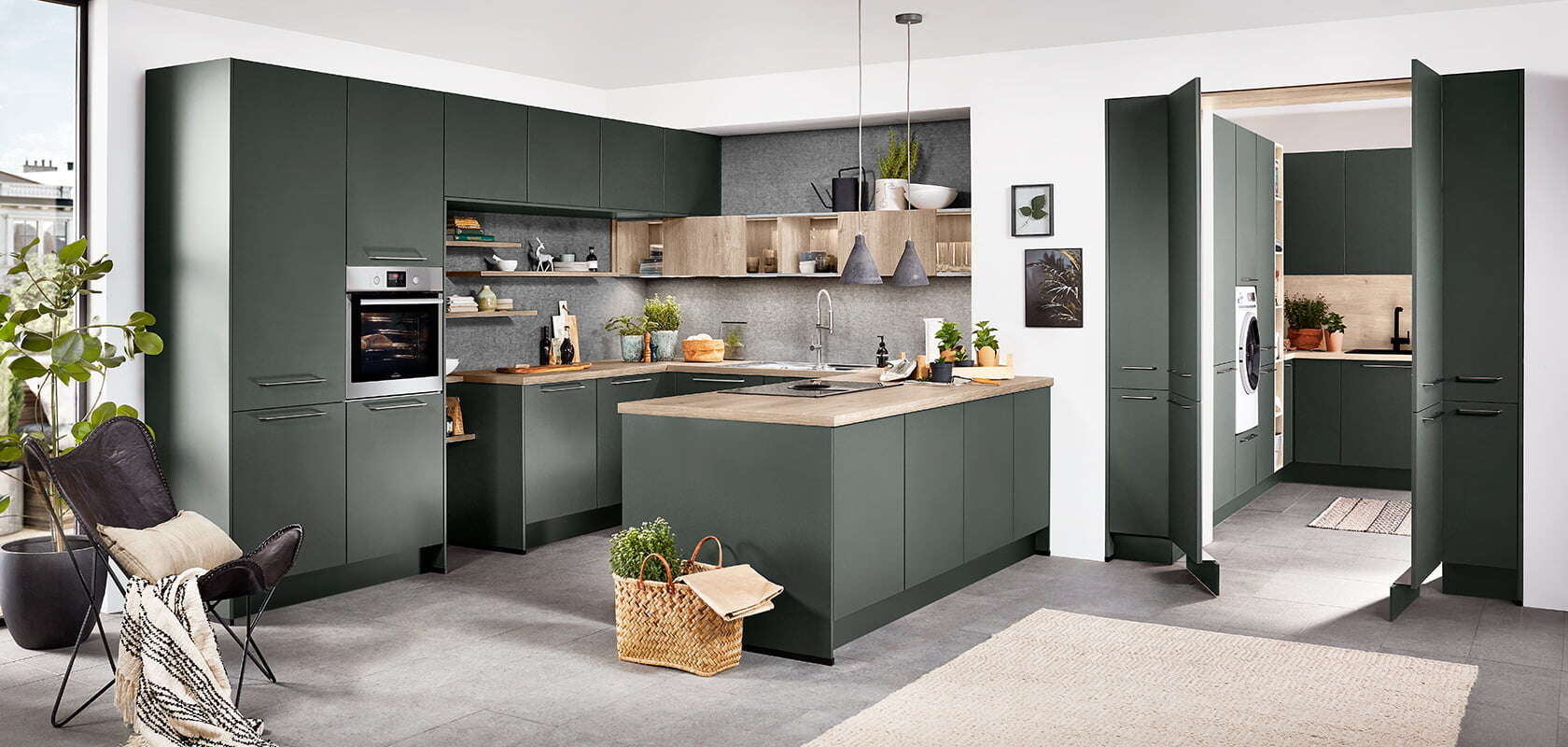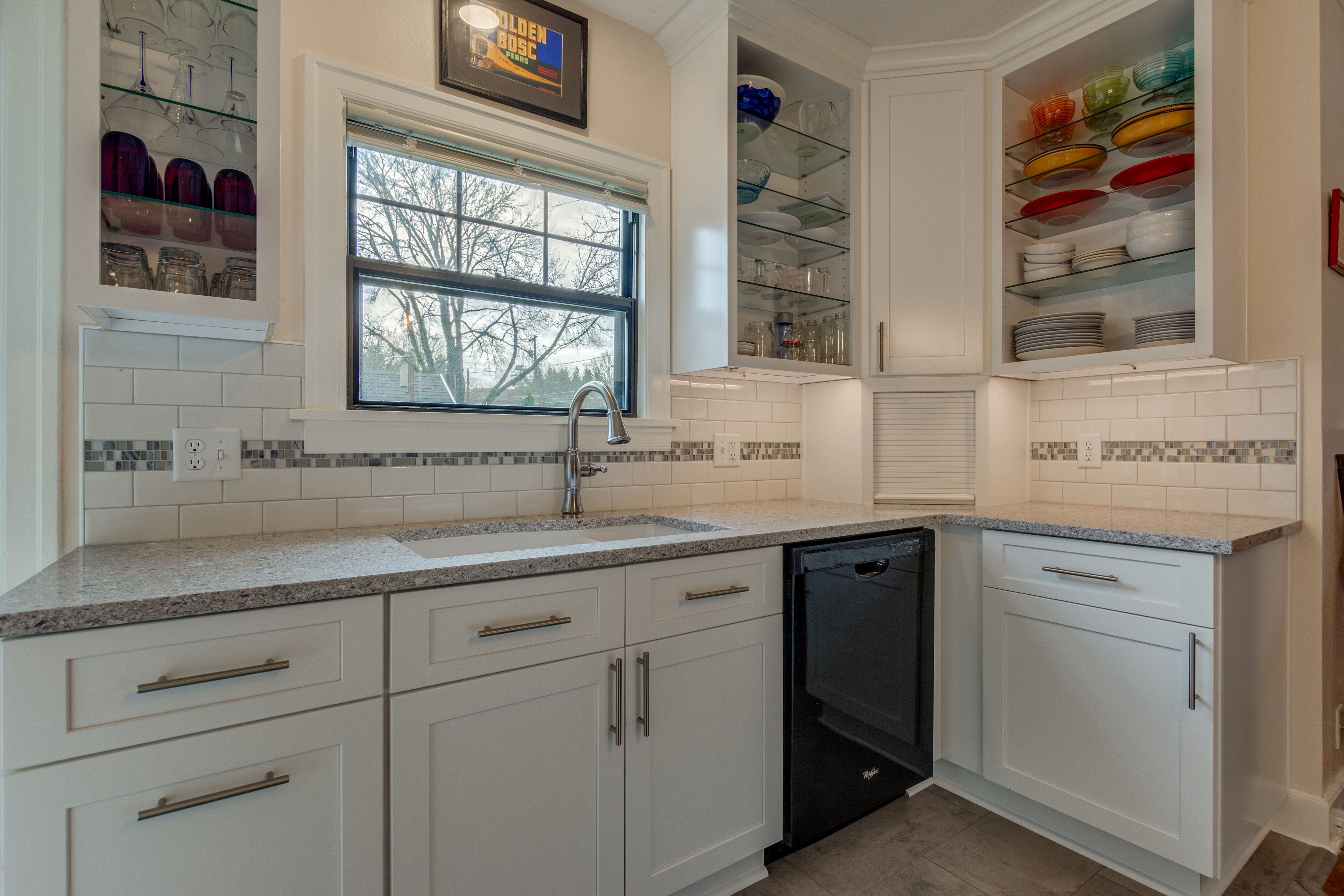Searching for new cabinets? While you may have the style in mind, the construction material—typically plywood or medium-density fiberboard (MDF)—significantly impacts your final result.
At Lamont Bros., we guide Portland-area homeowners through material selection based on their specific style, space, and expectations. This article examines the strengths and weaknesses of both plywood and MDF cabinet materials, addressing common myths and helping you determine which option best suits your needs.

Plywood vs. MDF: The Basics
Both plywood and MDF are wood-based materials that differ primarily in their processing method.
Plywood consists of multiple wood sheets (plies) pressed together with alternating grain directions, creating exceptional structural strength.
MDF (medium-density fiberboard) is manufactured by converting wood into pulp, mixing it with resins, then forming solid boards under high heat and pressure.
Visual identification is straightforward: MDF appears smooth and flat without wood grain patterns, while plywood retains visible wood grain on its surface.
Quality Misconceptions
Contrary to popular belief, neither material is inherently “higher quality” than the other. Both MDF and plywood are used in premium cabinet construction across various price points. For example, Nobilia, one of our most popular European cabinet manufacturers, primarily uses MDF in their high-end products, while many other quality manufacturers rely on plywood construction.
Benefits of MDF Cabinets

There are several scenarios in which homeowners choose MDF cabinets over plywood. While not the best option for everyone, MDF offers distinct advantages:
Precise Milling
MDF’s heavily processed nature creates exceptionally flat, smooth surfaces. This makes it ideal for:
- Laminate cabinets: MDF’s smooth surface creates a clean bond with laminate veneers, reducing warping and deformation compared to plywood, which naturally changes shape as it ages.
- Frameless cabinets: The precision of MDF boards enables perfectly aligned installations. In contrast, even slight variations in plywood thickness (1/32″ per panel) can result in significant misalignment (up to 3/8″ across six wall cabinets).
Note: For framed cabinets, this precision is less critical since only the cabinet face frames sit against one another.
Cost-Effective
MDF cabinets typically cost 10-15% less than plywood alternatives. This price difference stems from simpler manufacturing:
- Plywood production preserves wood in a somewhat natural state, requiring careful quality control and wood grade selection.
- MDF production reduces wood to fibrous particles through an automated process, eliminating the need for extensive quality control.
If you have questions about how much your kitchen remodel will cost, check out our Kitchen Remodel Cost guide. Or, to get specific answers about your kitchen, connect with our team.
Environmentally Friendly
MDF can be manufactured from recycled materials, including:
- Recycled building materials
- Construction waste
- Otherwise unusable wood products
This reduces the demand for freshly cut timber compared to plywood, which requires intact wood for its plies.
Superior Painting Surface
MDF’s consistent, flat surface accepts paint evenly and smoothly. Plywood’s natural grain, knots, and grooves make achieving a clean, even paint finish more challenging.
Think MDF is right for you? Reach out to one of our Design Consults to get expert guidance on your kitchen remodel, and answers to all of your cabinet related questions.
Benefits of Plywood Cabinets

Plywood offers specific advantages that make it the preferred choice for certain cabinet applications:
Superior Strength
Plywood’s alternating grain patterns create exceptional durability, providing several benefits:
- Transportation resilience: Plywood cabinets withstand shipping and transit with less damage than MDF alternatives.
- Shelf stability: Plywood shelving resists bowing under heavy dishware and withstands moisture exposure (such as wet dishes from dishwashers) better than MDF shelves, which is why we often recommend upgrading to plywood shelving.
Note: Once installed, both materials offer comparable durability for most cabinet applications. The strength difference is most significant during transportation and for shelving.
Installation Advantages
Cabinet installers often prefer plywood for practical reasons:
- Lighter weight: Plywood achieves equivalent strength with less material, resulting in lighter cabinets that are easier to handle and position.
- Fewer fasteners: Plywood cabinets typically require only 2-3 anchor screws compared to 4-5 for MDF cabinets, reducing installation time and minimizing the risk of cabinet damage during mounting.
- Damage resistance: Plywood better withstands the installation process, while MDF is more susceptible to damage from handling, drilling, and fastening.
Water Resistance
Plywood significantly outperforms MDF in moisture-prone environments:
- Structural integrity: MDF’s porous nature causes it to absorb moisture, potentially bubbling or disintegrating when wet, while plywood maintains its structure better when exposed to water.
- Practical considerations: Many MDF cabinets feature plastic feet that keep the material 2-3″ off the floor, providing protection from minor flooding. However, even moisture from wet dishes can damage MDF shelving depending on its surface coating.
- Recommendations: For areas near water features, plywood is generally safer. If using MDF cabinets, we recommend:
- Securing water lines properly
- Promptly cleaning spills
- Using specially designed water mats in cabinet bottoms to collect potential leaks
Start Your Kitchen Remodel
You now have a better idea about which cabinet type is right for you. If you have more questions about cabinet materials, kitchen design, construction options, or other aspects of kitchen remodeling, our team is here to help.
Schedule a call with one of our Design Consultants to get personalized cabinet recommendations or to discuss the vision for your kitchen remodel.



